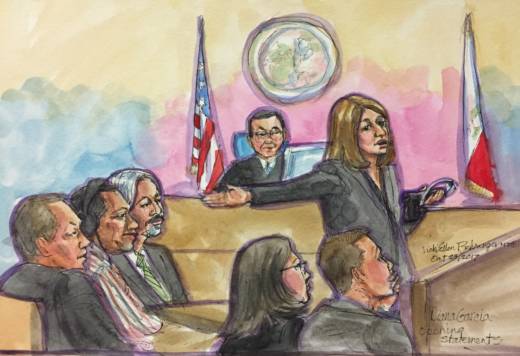A retired San Francisco crime scene investigator testified Monday in the high-profile murder trial over the 2015 slaying of Kathryn Steinle that "firearms do not fire by themselves."
It's a simple point that's at the heart of whether defendant Jose Ines Garcia Zarate will be found guilty of murdering 32-year-old Steinle, whom he had never met, as she walked with her father on San Francisco's waterfront.
To justify a murder conviction, the prosecution must prove Garcia Zarate intended to fire the gun at Steinle or a crowd of people gathered on Pier 14 about an hour before sunset on July 1, 2015. The defense is arguing Steinle's death was an accident: that Garcia Zarate picked up an unknown object wrapped in cloth from beneath a rotating metal chair on the pier. The gun was stolen from a U.S. Bureau of Land Management ranger four days before the the killing, and the defense argues it accidentally fired as Garcia Zarate unwrapped it.
Assistant District Attorney Diana Garcia called since-retired SFPD officer and crime scene investigator John Evans to testify on Monday. He said the initial investigation of the pier on July 1, 2015, turned up no evidence.
But after a bullet that had been flattened on one side was extracted from Steinle's body, Evans and his team of crime scene investigators returned to the pier, determined through an "exhaustive search" to find the place where the bullet struck before it hit Steinle in the back.
